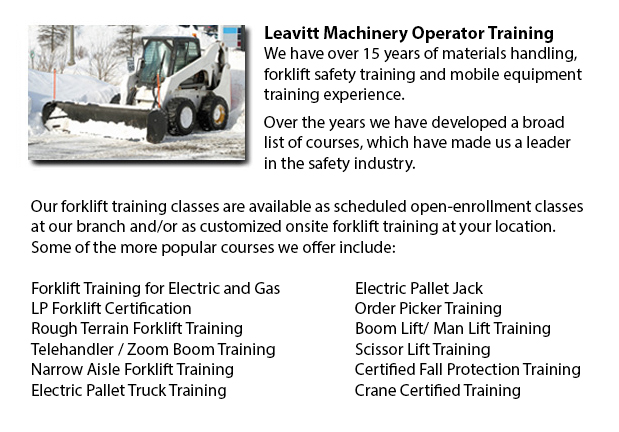
Kamloops Skid Steer Ticket - On a skid-steer loader, the lift arms are next to the driver together with pivot points at the back of the driver's shoulders. This makes them different than a conventional front loader. Due to the operator's proximity to moving booms, early skid loaders were not as safe as traditional front loaders, especially during the operator's entry and exit. Today's' modern skid-steer loaders have many features to protect the driver like fully-enclosed cabs. Similar to several front loaders, the skid-steer model can push materials from one location to another, is capable of loading material into a trailer or a truck and could carry material in its bucket.
Operation
There are numerous times where the skid-steer loader could be utilized instead of a large excavator on the jobsite for digging holes from the inside. To start, the loader digs a ramp to be used to excavate the material out of the hole. As the excavation deepens, the machinery reshapes the ramp making it longer and steeper. This is a very functional way for digging beneath a building where there is not adequate overhead clearance for the boom of a large excavator. For instance, this is a common situation when digging a basement below an existing house or building.
There is much flexibility in the accessories which the skid steer loaders are capable of. For instance, the conventional bucket of many of these loaders could be replaced with numerous accessories that are powered by the loader's hydraulic system, comprising cement mixers, pallet forks, backhoes, tree spades, sweepers, mowers and snow blades. Some other popular specialized attachments and buckets comprise angle brooms, dumping hoppers, wood chipper machines, grapples, tillers, stump grinders rippers, wheel saws, snow blades, and trenchers.
History
The 3-wheeled front end loader was invented in 1957, by Louis and Cyril Keller in their hometown of Rothsay, in the state of Minnesota. The Keller brothers created this machinery in order to help mechanize the process of cleaning in turkey barns. This particular machinery was compact and light and consisted of a rear caster wheel which enabled it to maneuver and turn around within its own length, enabling it to carry out similar jobs as a conventional front-end loader.
The Melroe brothers of Melroe Manufacturing Company in Gwinner, N.D. acquired during the year 1958, the rights to the Keller loader. The company then hired the Keller brothers to help with development of the loader. The M-200 Melroe was the result of this partnership. This particular model was a self-propelled loader which was introduced to the market in 1958. The M-200 Melroe featured a 12.9 HP engine, a 750 lb lift capacity, two independent front drive wheels and a rear caster wheel. By the year 1960, they replaced the caster wheel with a rear axle and launched the first 4 wheel skid steer loader that was called the M-400.
The term "Bobcat" is used as a generic term for skid-steer loaders. The M-400 shortly after became the Melroe Bobcat. The M-440 version has rated operating capacity of 1100 lbs powered by a 15.5 HP engine. The company continued the skid-steer development into the mid 1960s and introduced the M600 loader.
-
Kamloops Counterbalance Forklift Training
Kamloops Counterbalance Forklift Training - Counterbalance Forklift Training courses are always in high demand. The Counterbalance forklift is a forklift which is made with a weight which counters the balance, equally spreading the weight of the load... More -
Kamloops Manlift Certification
Kamloops Manlift Certification - The Manlifts and Elevated Platforms program offers training on the rules, regulations and proper application of safe operating measures and work practices included in daily activities for people who work making use of... More -
Kamloops Boom Lift Training
Kamloops Boom Lift Training - Elevated work platforms, likewise referred to as aerial platforms, allow workers to carry out tasks at heights that will otherwise be not reachable. There are various styles of lifts designed for different site applicati... More -
Operator Safety Certification | Re-Qualification Certification | In-House Instructor Certification in Kamloops
Forklifts are used in just about all industrial construction sites and in warehouse operations and in boat yards. The reach feature of a lift truck is a vital component used in several applications like for instance when a shelving system is being us... More -
Kamloops Manlift Safety Training
Kamloops Manlift Safety Training - It is essential for competent Manlift operators to be aware of the connected dangers that come with particular kinds of scissor lifts. They must be able to operate the scissor lift in a way that protects not only th... More -
Kamloops Crane Training Schools
Kamloops Crane Training Schools - We have designed several programs for Mobile Crane Operation at our Crane Training Schools. These programs are recommended for the experienced operator who requires certification or re-certification, and for inexperi... More -
Skid Steer Loader Certification in Kamloops
The engine powered skid-steer loader consists of a rigid and small frame, outfitted together with lift arms which could attach to a lot of industrial attachments and tools to perform several labor saving jobs. Typically, skid-steer loaders are four-w... More -
Kamloops Heavy Equipment License
Kamloops Heavy Equipment License - A heavy equipment license could be acquired by taking a certification and preparation course at a private training school or a vocational school. This license would qualify you to operate various types of heavy mach... More

Forklift Certification Kamloops
TOLL FREE: 1-888-254-6157
Kamloops, British Columbia
forkliftcertificationkamloops.com/
Email Us
About Us


